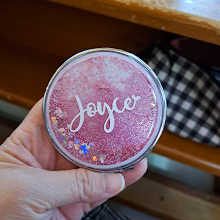Recycle Plastic Bottles and Cans with KLEAN
Sunday, August 25, 2024#SunProtectionSeries: Maximizing the Benefits of Sunscreen
Wednesday, July 31, 2024July is UV Awareness Month
Key Considerations for Sunscreen Selection
#1: Formulation and Ingredients
#2: Broad-Spectrum Protection
#3: Sun Protection Factor (SPF)
#4: Water Resistance
From left to right: Dr. Jart+ Every Sun Day Waterproof Sun Milk, Missha All-Around Safe Block Waterproof Sun Milk, Dr.Ceuracle Cica Regen Waterproof Sun
Proper Application of Sunscreen
- Timing: Apply sunscreen 15-30 minutes before sun exposure to allow it to fully absorb and form a protective barrier.
- Quantity: Use enough sunscreen to cover all exposed skin, ensuring even coverage, including often-missed areas like the ears, neck, and tops of feet.
- Frequency: Reapply sunscreen every 2 to 3 hours, especially after swimming, sweating, or towel drying.
- Daily Use: Incorporate sunscreen into your daily skincare routine, even on cloudy days or during winter, as UV rays can penetrate clouds and reflect off glass.
Storage and Expiration
My Latest Sunscreen Purchases
My Recent Sunscreen Empties
Influenza Vaccination
Monday, July 22, 2024What is influenza?
How effective are Influenza vaccines?
Why do we need to get influenza vaccine?
Who should receive influenza vaccine?
Who should consult health care provider before receiving influenza vaccine?
- People with Guillain-Barré Syndrome (a severe paralyzing illness, also called GBS) or with history of GBS.
- People with severe or life-threatening allergy to any ingredient in a vaccine.
- People who had severe allergy reaction to previous dose of any other flu vaccine.
- People who are feeling sick.
Vaccine side effects
- Soreness, redness, and/or swelling where the shot was given
- Headache (low grade)
- Fever
- Muscle aches
- Nausea
- Fatigue
Can I get seasonal flu even though I got a flu vaccine this year?
- You may be exposed to a flu virus shortly before getting vaccinated or during the period that it takes the body to gain protection after getting vaccinated. This exposure may result in you becoming ill with flu before the vaccine begins to protect you. (Antibodies that provide protection develop in the body about 2 weeks after vaccination.)
- You may be exposed to a flu virus that is not included in the seasonal flu vaccine. There are many different flu viruses that circulate every year. A flu vaccine is made to protect against the four flu viruses that research suggests will be most common.
- Unfortunately, some people can become infected with a flu virus that the vaccine is designed to protect against, despite getting vaccinated. Protection provided by flu vaccination can vary widely, based in part on the age and health of the person getting vaccinated. In general, flu vaccines work best among healthy younger adults and older children. Some older people and some people with certain chronic illnesses may develop less immunity after vaccination. Flu vaccination is not a perfect tool, but it is the best way to protect against flu virus infection.
If I had my influenza vaccine (Northern strain) within 6 months ago, can I get vaccinate again this month?
What is the difference between Northern and Southern strain vaccine? Should I wait for the Northern strain instead of Southern strain?
I just been infected with Influenza last 2 weeks. How soon can I get influenza vaccine and will it be effective?
Life Snippets in June
Saturday, June 15, 2024What we ate
Tanjung Batu Beach
Taman Tumbina
My Life-Saving Checklists
Saturday, May 18, 2024Tips for Life
Save Yourself
Nutrition Checklist
Finance Checklist
蘑菇濃湯 (Cream of Mushroom Soup) Children Song (Chinese)
Saturday, April 27, 2024蘑菇濃湯 (Cream of Mushroom Soup) - Original Version
蘑菇蘑菇 讓我把你帶回家
蘑菇蘑菇 放進我的牛奶鍋
蘑菇蘑菇 做成一碗湯
要不要再加一點胡椒
還可以再加一點香草
然後再用心地把它攪一攪啊
拿起我的湯匙我要咕嚕咕嚕咕嚕~~~吃掉!
蘑菇蘑菇 泡在我的牛奶鍋
蘑菇蘑菇 旁邊坐著紅蘿蔔
蘑菇蘑菇 我把玩具收一收
蘑菇蘑菇 端出一碗湯
要不要再加一點胡椒
還可以再加一點香草
然後再用心地把它攪一攪啊
拿起我的湯匙我要咕嚕咕嚕咕嚕~~~
全部吃掉!
MOGU MOGU, hiding in the corner of the mart,
MOGU MOGU, come, let me take you home,
MOGU MOGU, into my lil' milk pot you go,
MOGU MOGU, making a bowl of soup.
Should I add a little bit more pepper?
Maybe a touch more parsley?
With love and care, I'll give it a stir,
Now I'll pick up my spoon and let's slurp, slurp, slurp – slurp up!
MOGU MOGU, soaking in my lil’ milk pot,
MOGU MOGU, sitting next to a carrot,
MOGU MOGU, let me tidy up my toys,
MOGU MOGU, serving a bowl of soup.
Should I add a little bit more pepper?
Maybe a touch more parsley?
With love and care, I'll give it a stir,
Now I'll pick up my spoon and let’s slurp, slurp, slurp – slurp it all up!
蘑菇濃湯 (Cream of Mushroom Soup) - Remix Version
蘑菇蘑菇
蘑菇蘑菇 躲在市場的角落
蘑菇蘑菇 讓我把你帶回家
蘑菇蘑菇 放進我的牛奶鍋
蘑菇蘑菇 做成一碗湯
要不要再加一點胡椒
還可以再加一點香草
然後再用心地把它攪一攪啊
拿起我的湯匙我要咕嚕咕嚕咕嚕
全部吃掉!吃吃吃掉!吃吃吃掉!吃吃吃掉!吃掉吃掉!
蘑菇蘑菇 泡在我的牛奶鍋
蘑菇蘑菇 旁邊坐著紅蘿蔔
蘑菇蘑菇 我把玩具收一收
蘑菇蘑菇 端出一碗湯
要不要再加一點胡椒
還可以再加一點香草
然後再用心地把它攪一攪啊
拿起我的湯匙我要咕嚕咕嚕咕嚕~~~
全部吃掉!
吃吃吃掉!吃吃吃掉!吃吃吃掉!吃掉吃掉吃掉!
吃吃吃掉!吃吃吃掉!吃吃吃掉!吃掉吃掉!
吃吃吃掉!吃吃吃掉!吃吃吃掉!吃掉吃掉!
吃吃吃掉!吃吃吃掉!吃吃吃掉!
MOGU MOGU
MOGU MOGU, hiding in the corner of the mart,
MOGU MOGU, come, let me take you home,
MOGU MOGU, into my lil' milk pot you go,
MOGU MOGU, making a bowl of soup.
Should I add a little bit more pepper?
Maybe a touch more parsley?
With love and care, I'll give it a stir,
Now I'll pick up my spoon and let's slurp, slurp, slurp – slurp it all up!
Slurp slurp slurp up! slurp slurp slurp up! slurp slurp slurp up! slurp up slurp up!
MOGU MOGU, soaking in my lil’ milk pot,
MOGU MOGU, sitting next to a carrot,
MOGU MOGU, let me tidy up my toys,
MOGU MOGU, serving a bowl of soup.
Should I add a little bit more pepper?
Maybe a touch more parsley?
With love and care, I'll give it a stir,
Now I'll pick up my spoon and let’s slurp, slurp, slurp – slurp it all up!
Slurp slurp slurp up! slurp slurp slurp up! slurp slurp slurp up! slurp up slurp up slurp up!
Slurp slurp slurp up! slurp slurp slurp up! slurp slurp slurp up! slurp up slurp up!
Slurp slurp slurp up! slurp slurp slurp up! slurp slurp slurp up! slurp up slurp up!
Slurp slurp slurp up! slurp slurp slurp up! slurp slurp slurp up!
音樂製作 Music Production:#PlayBIGMusic
詞曲 Songwriter:Lydia Wangwang
演唱 Vocals:PlayBigKids
動畫製作 Animation Production:混合編碼 MixCode Studio
英文翻譯 English Translation: Cheryl Lee
詞曲原創版權 Original Publisher:小啼大作兒童音樂社有限公司 #PlayBIGMusic
詞曲版權代理 Sub Publisher:小啼大作兒童音樂社有限公司 #PlayBIGMusic
Spice Up Your Noodle Game with Jinjja Ramyun Today!
JINJJA Has COME! Discover Real Korean Taste
Flavors: Spicy Mushroom, Spicy Chicken, Kimchi
There are three flavors: Kimchi, Spicy Mushroom, and Spicy Chicken. Oh, let me highlight to you that Jinjja Ramyun is halal certified.
Jinjja Ramyun Spicy Mushroom (Soup)
Jinjja Ramyun Spicy Chicken (Dried)
Jinjja Ramyun Kimchi (Soup)
Let's get cooking!
Check out what I have cooked and my verdict for each flavor.
Where to Buy Jinjja Ramyun?
Happy slurping, folks!
In conclusion, Jinjja Ramyun is a must-have addition to any noodle lover's repertoire. With its bold flavor, easy preparation, and endless customization options, it's a culinary adventure waiting to happen. So go ahead, grab yourself a pack (or two) of Jinjja Ramyun, and get ready to spice up your noodle game like never before!
You can order online for doorstep delivery. Don't miss out on the chance to spice up your noodle game – grab your pack of Jinjja Ramyun today from Shopee and Lazada.
Personal income tax reliefs in Malaysia for 2024 (YA 2023)
Have you filed your income tax for the Year of Assessment 2023?
Lembaga Hasil Dalam Negeri (LHDN) Malaysia or the Malaysian Inland Revenue Board (IRB) has extended the deadline for non-business taxpayers to submit their Tax Return Form for the Year of Assessment 2023 via e-Filing to 15 May 2024.
Tax Relief Information
Infographic from Lembaga Hasil Dalam Negeri Malaysia website.
Infographic from Lembaga Hasil Dalam Negeri Malaysia website.
More information
MyTax e-Filing PortalMalaysian Employees' Provident Fund (EPF) Restructuring Initiative 2024
Friday, April 26, 2024Summary of the Malaysian Employees' Provident Fund (EPF) Restructuring Initiative 2024 (English)
- 75% to Akaun Persaraan (Retirement Account)
- 15% to Akaun Sejahtera (Wellbeing Account)
- 10% to Akaun Fleksibel (Flexible Account)
3. Akaun Fleksibel is a new account introduced to meet the short-term needs of members. Deposits in Akaun Fleksibel can be withdrawn by members at any time for any purpose, subject to a minimum withdrawal amount of RM50.
4. On the day when the new account restructuring is in effect, Akaun Fleksibel for members will start with a zero balance. Members are given the option to transfer part of their savings balance in their Akaun Sejahtera (previously Account 2) as an initial amount in Akaun Fleksibel. The purpose for the option to transfer the initial amount Akaun Fleksibel is to enable members to make withdrawals from Akaun Fleksibel without having to wait for new contributions.
5. The period for members to make this initial amount transfer option will be open from 11 May 2024 until 31 August 2024, whereby this option can be made only one (1) time during that period and the option cannot be cancelled. The amount to be transferred is based on the member’s Akaun Sejahtera balance at the time the selection is made.
6. Examples of savings transfers for members who choose to have an initial amount in Akaun Fleksibel are as follows:
Scenario 1: Members who have savings of RM3,000 and above in Akaun Sejahtera:
- Ten of thirty (10/30) of the savings in Akaun Sejahtera will be transferred to Akaun Fleksibel;
- Five of thirty (5/30) of the savings in Akaun Sejahtera will be transferred to Akaun Persaraan; and
- Fifteen of thirty (15/30) will be retained in Akaun Sejahtera.
Scenario 2: Members who have savings of less than RM3,000 Akaun Sejahtera:
- Akaun Sejahtera with savings of RM1,000 and below, all amounts are transferred to Akaun Fleksibel.
- Akaun Sejahtera with savings exceeding RM1,000 and not exceeding RM3,000, the amount transferred to Akaun Fleksibel is RM1,000, while the balance remains in Akaun Sejahtera.
No transfer will be made to Akaun Persaraan for savings in Akaun Sejahtera that are less than RM3,000.
Summary of the initial amount transfer as follows:
7. Members can make withdrawals from Akaun Fleksibel at any time for any purpose, subject to a minimum withdrawal amount of RM50.
8. Applications for withdrawals from Akaun Fleksibel can be made through EPF i-Akaun or at any EPF branch nationwide.
9. For more information, please refer to Frequently Asked Questions at www.kwsp.gov.my or the KWSP i-Akaun app.
Ringkasan Inisiatif Penstrukturan Semula Akaun Kumpulan Wang Simpanan Pekerja (KWSP) 2024 (Bahasa Malaysia)
1. Inisiatif Penstrukturan Semula Akaun KWSP adalah bertujuan untuk meningkatkan keselamatan pendapatan persaraan ahli di samping memenuhi keperluan kitaran hidup semasa mereka.
2. Di bawah inisiatif ini, akaun ahli KWSP akan distruktur semula daripada dua (2) akaun iaitu Akaun 1 dan Akaun 2 kepada tiga (3) akaun iaitu Akaun Persaraan, Akaun Sejahtera dan Akaun Fleksibel di mana caruman baharu yang diterima selepas tarikh kuatkuasa akan diagihkan seperti berikut: 75% kepada Akaun Persaraan, 15% kepada Akaun Sejahtera dan 10% kepada Akaun Fleksibel.
3. Akaun Fleksibel merupakan akaun baharu yang diperkenalkan untuk memenuhi keperluan jangka pendek ahli. Simpanan dalam Akaun Fleksibel boleh dikeluarkan oleh ahli pada bila-bila masa untuk sebarang tujuan, tertakluk kepada amaun minimum pengeluaran sebanyak RM50.
4. Pada tarikh kuat kuasa struktur akaun baharu, Akaun Fleksibel ahli akan bermula dengan baki sifar. Ahli diberikan pilihan untuk memindahkan sebahagian daripada baki simpanan yang ada dalam Akaun Sejahtera mereka (sebelum ini Akaun 2) sebagai amaun permulaan dalam Akaun Fleksibel. Tujuan ahli diberikan pilihan pindahan amaun permulaan ke Akaun Fleksibel ini adalah bagi membolehkan ahli membuat pengeluaran daripada Akaun Fleksibel tanpa perlu menunggu caruman baharu.
5. Tempoh bagi ahli membuat pilihan pindahan amaun permulaan ini akan dibuka mulai 11 Mei 2024 sehingga 31 Ogos 2024, di mana pilihan ini boleh dibuat sebanyak satu (1) kali sahaja dalam tempoh tersebut dan pilihan itu tidak boleh dibatalkan. Amaun yang akan dipindahkan adalah berdasarkan baki Akaun Sejahtera ahli semasa pilihan ini dibuat.
6. Contoh pindahan simpanan bagi ahli yang memilih untuk mempunyai amaun permulaan dalam Akaun Fleksibel adalah seperti berikut:
Senario 1: Ahli yang mempunyai simpanan sebanyak RM3,000 dan ke atas dalam Akaun Sejahtera:
- Sepuluh per tiga puluh (10/30) daripada simpanan dalam Akaun Sejahtera akan dipindahkan ke Akaun Fleksibel;
- Lima per tiga puluh (5/30) daripada simpanan dalam Akaun Sejahtera akan dipindahkan ke Akaun Persaraan; dan
- Lima belas per tiga puluh (15/30) akan dikekalkan dalam Akaun Sejahtera.
Senario 2: Ahli yang mempunyai simpanan kurang daripada RM3,000 dalam Akaun Sejahtera:
- Akaun Sejahtera yang mempunyai simpanan RM1,000 dan ke bawah, semua amaun dipindahkan ke Akaun Fleksibel.
- Akaun Sejahtera yang mempunyai simpanan melebihi RM1,000 dan tidak melebihi RM3,000, amaun yang dipindahkan ke Akaun Fleksibel adalah RM1,000, manakala baki adalah kekal dalam Akaun Sejahtera.
Tiada pindahan akan dibuat ke Akaun Persaraan bagi simpanan dalam Akaun Sejahtera yang kurang dari RM3,000.
Ringkasan pindahan amaun permulaan adalah seperti di bawah:
7. Ahli boleh membuat pengeluaran daripada Akaun Fleksibel pada bila-bila masa untuk sebarang tujuan, tertakluk kepada amaun minimum pengeluaran sebanyak RM50.
8. Permohonan bagi pengeluaran daripada Akaun Fleksibel boleh dibuat melalui KWSP i- Akaun atau di mana-mana cawangan KWSP di seluruh negara.
9. Untuk maklumat lanjut, sila rujuk Soalan Lazim di www.kwsp.gov.my atau aplikasi KWSP i-Akaun.
Sources:
Penstrukturan Semula Akaun KWSP Untuk Menangani Keperluan Kitaran Hayat Ahli
Nota kepada Editor: Ringkasan Inisiatif Penstrukturan Semula Akaun KWSP
Note:
According to The Star, there would be no different dividend rates between Accounts 1, 2, and 3 as assured by EPF.
Cardiopulmonary Resuscitation (CPR) & Automated External Defibrillator (AED)
Saturday, April 6, 2024What is Cardiopulmonary Resuscitation (CPR)?
CPR involves chest compressions that simulate the heart's pumping action, effectively sustaining blood circulation throughout the body. Good and effective chest compressions play a pivotal role in maintaining blood flow and enhancing the likelihood of survival during cardiac arrest.
What is an Automated External Defibrillator (AED)?
How to conduct CPR for adults?
Remember D.R.C.A.B
1. Check the surroundings of the victim. Remove danger (D).
2. Check for response (R). Tap the victim's shoulder and call loudly, "Are you okay?" to check for response if the person is breathing / not breathing.
3. If there is no response, shout for help, call 999, and get someone to retrieve an AED. This is why you need to know where the AED is located.
4. Start chest compression (C).
- Position the heel of one hand in the center of the person's chest, directly over the sternum (breastbone) and between the nipples.
- Place the heel of your other hand on top of the first hand, interlacing the fingers of your top hand with the fingers of the bottom hand. Ensure that your shoulders are directly above your hands.
- Start pushing down firmly (5 to 6 cm), using the weight of your body. Keep your arms straight during the compressions.
- Repeat the compressions continuously to achieve 100 to 120 compressions per minute. Do not stop compressions for more than 10 seconds.
5. Tilt head, lift chin to open airway (A).
6. Use CPR mask to give 2 successive breath blows to the victim.
7. Continue CPR until the victim starts breathing (B) again.
8. When the AED arrives, follow the guided instruction while continue to administer CPR to the victim until the ambulance arrives.
Remember: Attend CPR and AED trainings when they are available. For example: Basic Occupational, First Aid, CPR & AED Training.
Keep in mind, in critical moments, your knowledge and swift action can significantly impact saving lives.
8 Smart Tips That You Can Use to Manage Your Online Study Time
Friday, March 1, 2024Here are 8 smart tips that you can use to manage your online study time.
#1 - Find a Right Study Space
#2 - Devices & Internet
#3 - Study Planner
#4 - Study Notes
#5 - Break Tasks Down
#6 - Seek Support
#7 - Pace Yourself
#8 - Self Care First
Download the Infographic
2024 Dragon CNY & Valentine's Day
Thursday, February 29, 2024
The post above showcased our meals when we were back in Kuala Terengganu. The first photo showed an ensemble of homemade nasi lemak. That homemade sambal petai by my MIL was awesome!
The rest of the photos were about our CNY eve dinner dishes and snacks. The "tong sui" or Chinese sweet soup was a dessert I looked forward to!
From the post above, it's about #makanmakan during our stay in Kuala Terengganu.
1 & 2 - Nasi minyak & sate
3 - MIL's soy sauce chicken dish, crab cakes & roast pork
4 - Steamed keropok lekor
5 - Homemade musang king durian ice cream
6 - Local breakfast (laksang, kayu keramat, karipap)
7 - Nasi ayam
8 - Sotong celup tepung
9 - Homemade fried nian gao
Hubby and I then went to Cherating to spend our Valentine's Day. 😍❤️































































